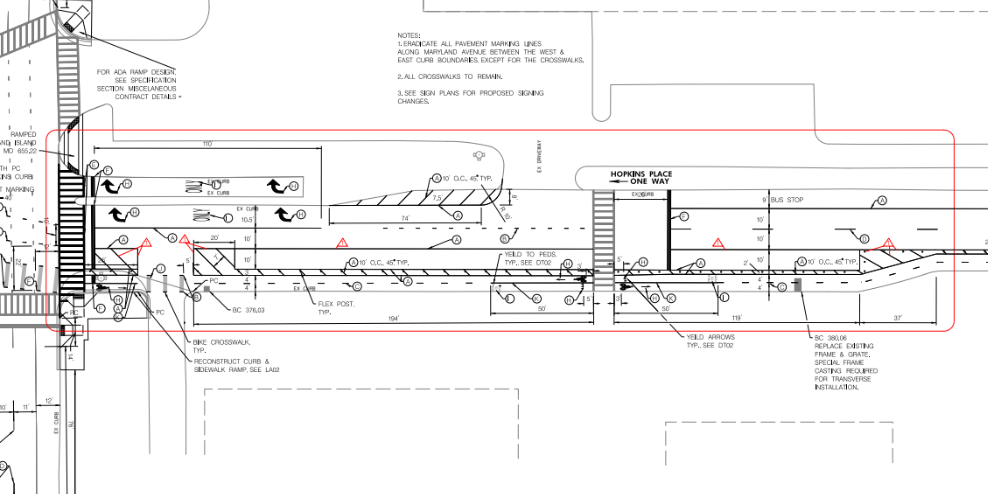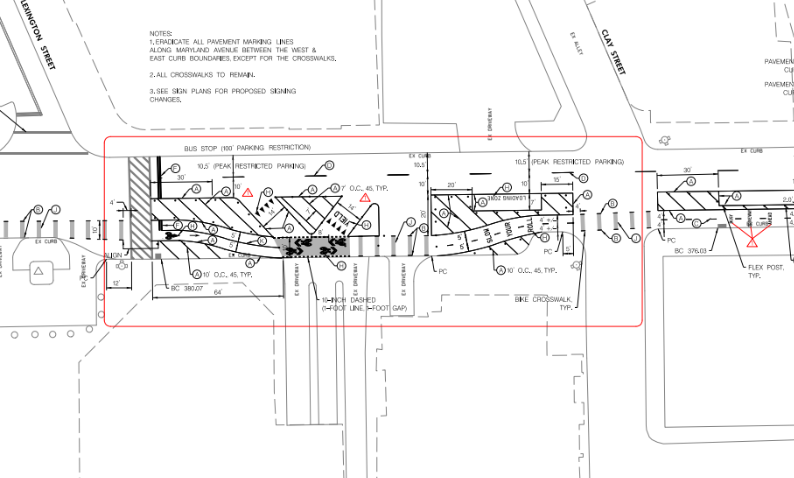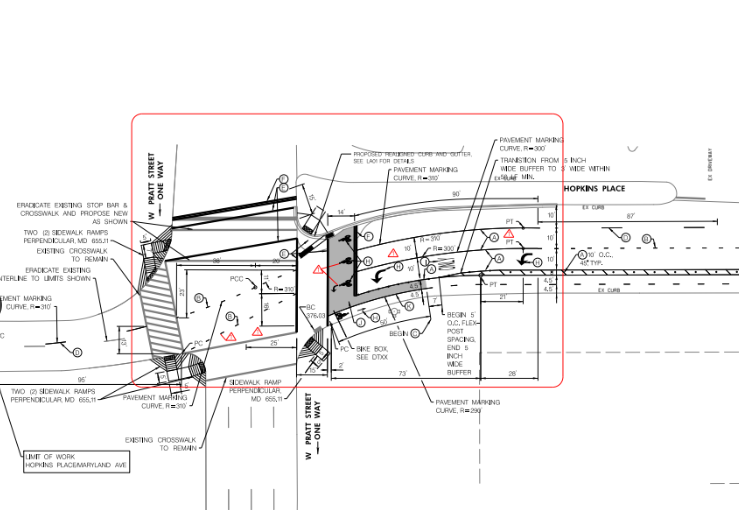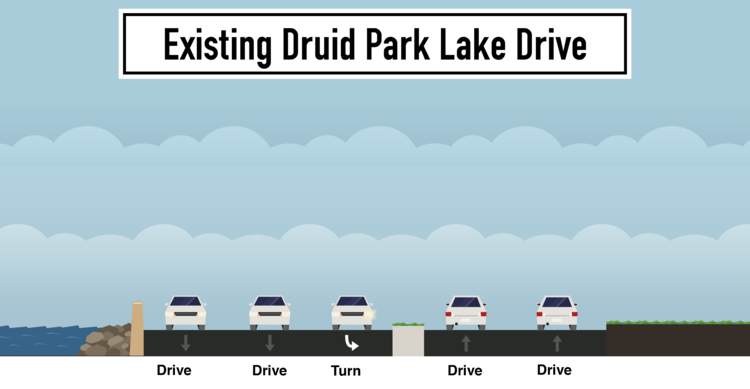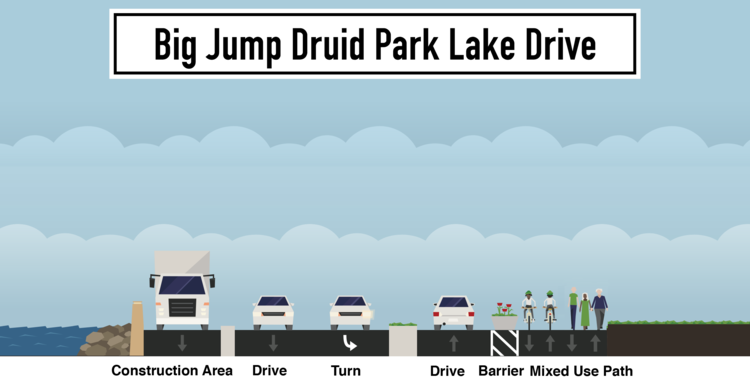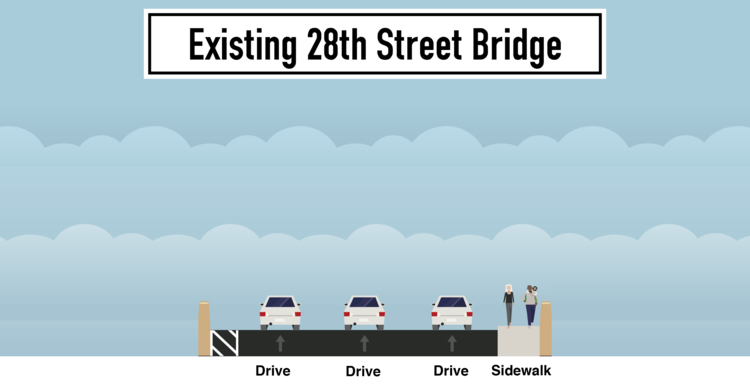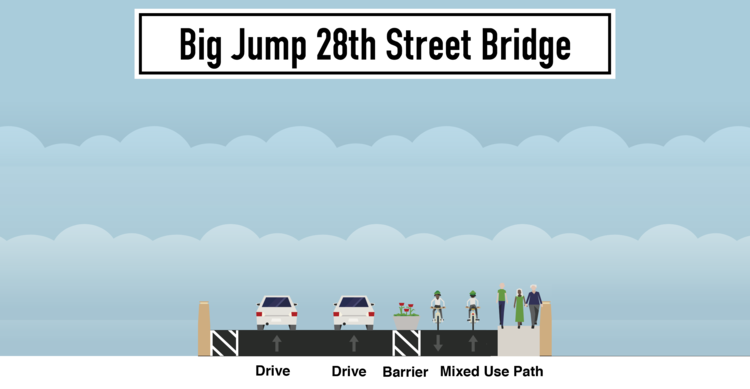A letter from Liz Cornish, Executive Director, Bikemore
Next Monday DOT will host a meeting to discuss whether or not to put down orange barrels for one mile on Roland Ave for four weeks. The idea is to determine if reducing that stretch of road to one lane is viable. If successful, it will demonstrate that it is possible to design a street that calms traffic, makes it safer get out of your car while parked in the street, and creates a wider, safer protected bike lane. Everyone has waited years for an improved design. We are ready to move forward.
Tell the City you support moving forward with the pilot. Tell the City that you support a protected bike lane on Roland Avenue.
Take action by sending an email to Councilwoman Sharon Green Middleton using this form:
Four years ago Tom Palermo, a beloved member of the bicycling community, and most importantly a husband and father, was killed on Roland Avenue using a bike lane on the outside of the curbside parking by Heather Cook. Cook was drunk, texting, and operating a vehicle without regard for human life. Bikemore existed before then, but there is no denying Tom’s death was a catalyzing moment for bike advocacy in Baltimore.
Shortly thereafter construction for a resurfacing and streetscaping project on Roland Avenue began, one planned long before Tom’s death. DOT moved forward with the existing design for three reasons: The Roland Park Civic League asked for a protected bike lane in their Master Plan, NACTO guidelines recommend it on streets where average vehicle speed and traffic volumes match that of Roland Avenue, and at the time it seemed unviable to garner public support for the removal of a traffic lane. There is also no doubt that Tom’s tragic death just mere blocks from the project also influenced their decision to build a protected bike lane.
Very few people are happy with the current configuration — including me. But over time a narrative emerged that people advocating for a bike lane were intruders. That only long standing residents should have a say. People with access to power typically have the upper hand. And so it was. Tensions ran high, public meetings were fraught, and the whole thing became absurd.
In this instance some people became blind with rage when their own extraneous interests weren’t given top priority. It also demonstrated that the City is still a long way from being able to respond to controversy fairly and with precision.
This is out of hand. The folks driving this controversy are no longer acting in good faith. People have been given four years to share their perspective. It’s time for a final decision to be made and move on.
I hope folks that attend the meeting take a step back and check the nastiness at the door. I hope everyone looks at the plans DOT drew up to put some barrels down on the street for four weeks and shrug their shoulders and say, ok.
There’s enough space on that street to make cars drive slower, to make it safer to exit your car when it’s parked on the street, and make a protected lane that people of all ages can safely and comfortably enjoy. Anyone that says different has decided to do so only to win a fight of their own making.
Making a public street that prioritizes the safety of all people over the convenience of cars is the best thing for everyone — even people who have made it clear that they disagree. Opponents have lots of tactics. They want more data — plenty exists. They want more time — they’ve had four years. They evoke concerns that stoke fear, like emergency response — that have no basis. They ask us to think of the children getting dropped off in cars — without regard to the kids who would like to bike but cannot do so safely. They say clearly that the road should be designed with only the people that use it the most in mind — rather than those most likely to be injured or killed. They say cyclists don’t deserve a bike lane since they already don’t follow the law — completely disregarding that in the case of people like Tom and too many others, it is the DRIVER WHO BROKE THE LAW AND KILLED SOMEONE.
I shake my head when people tell me I should stay away, not engage, not fan the flames. They forget this isn’t some pet cause or a hobby. This is advocacy for something that is proven to make people healthier and safer — something proven to save lives.






